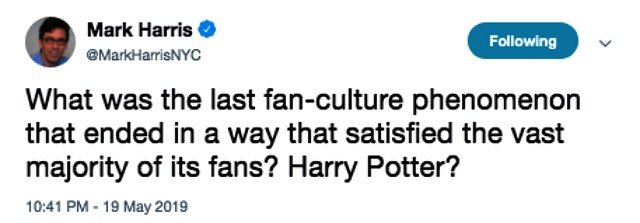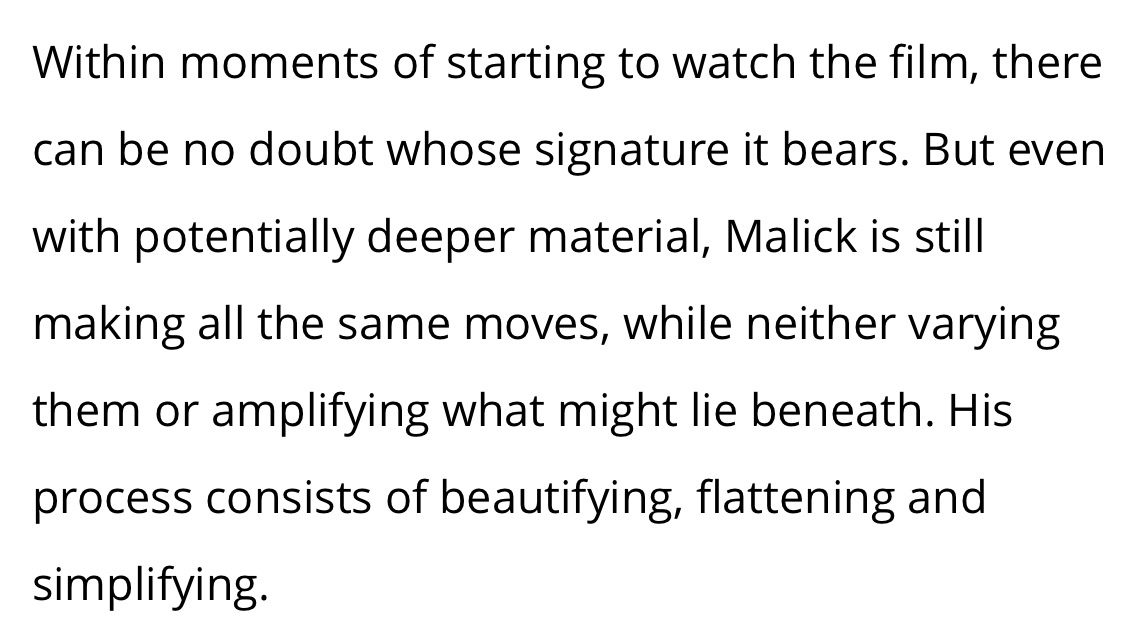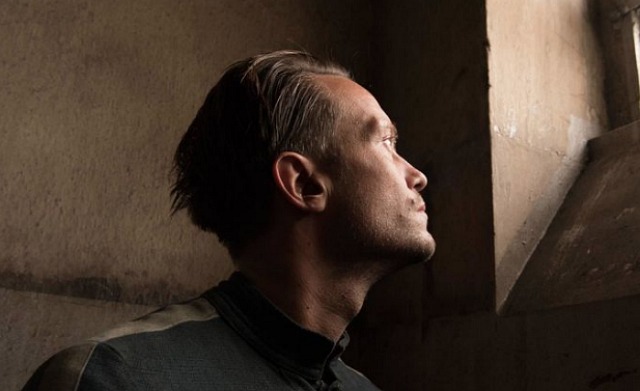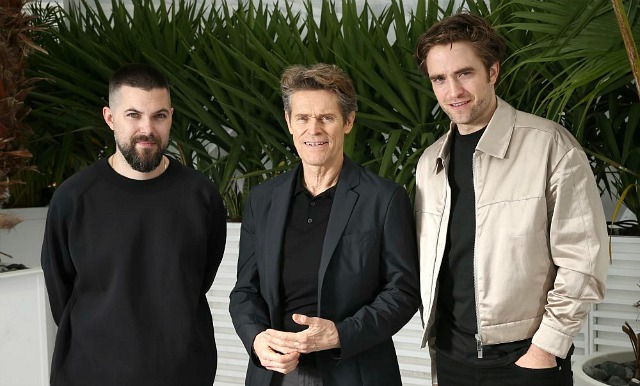I arrived in Cannes seven and a half days ago (i.e., the evening of Sunday, 5.12), but after five and a half days of screenings, the top four are The Lighthouse, Les Miserables, The Wild Goose Lake and — strange as this may sound — Rocketman. As I explained in my initial review piece, I wasn’t head over heels about Dexter Fletcher‘s’ film but I respect that he chose an audacious, classic-musical approach and made the most of it in a lusty cinematic way. Oh and just to reiterate, forget A Hidden Life. I haven’t seen Atlantique, and I’m seeing Portrait of a Lady On Fire this morning. Once Upon A Time In Hollywood screens tomorrow afternoon.
Day: May 19, 2019
“Goodbye, Baby”
Last night at least two bars along rue Felix Faure were trying to entice customers with English-language signs announcing that their huge flatscreens would be tuned to the Game of Thrones finale. I for one found this, like, depressing. I don’t think I need to explain why.


Dressed To Kill
Right after today’s screening of Terrence Malick‘s A Hidden Life broke around 4 pm, I ran over to the Gray d’Albion for a showing of Luca Guadagnino‘s The Staggering Girl, a 37-minute short.
I’d heard it was smoothly made and roundly applauded, but I had a special motive in wanting to catch it. I was very upset by Guadagnino’s Suspiria, you see, and I was hoping that A Staggering Girl would flush that memory out of my head, Luca-wise. It managed to do that and then some.
It’s bothered some critics that Girl, a Directors’ Fortnight selection that was shot in Manhattan and Rome, has been financed by Valentino and is, in fact, a kind of upmarket commercial (i.e., “branded content”) for the fashion line. I chose to ignore this (so what?) and simply concentrate on the acting (from Julianne Moore, Mia Goth, KiKi Layne, Kyle MacLachlan, Marthe Keller and Alba Rohrwacher), the script by Michael Metnick and of course Luca’s assured direction.
It’s basically about an Italian-American writer named Francesca (Moore) who’s struggling with a memoir, and her relationship with her white-haired, Rome-residing mother (Keller) who’s begun losing her mind.
I didn’t check the cast before watching it, but was surprised to discover that Moore’s blustery, German-accented mom was Keller — I recognized the voice but not the face and certainly not the hair.
Story or theme-wise there’s not a lot to feast upon (apart from the beautiful gowns and pant suits, I mean). It’s mostly about Moore trying to persuade mom to come back to New York with her because she’s getting too old to look after herself, and Keller protesting that “this is my home!”
But settling into the vibe and mood of The Staggering Girl bestowed feelings of comfort, especially the portions that were shot in Rome. I worship the magic-hour light in that town.
Hat tip to dp Sayombhu Mukdeeprom (who shot Call Me By Your Name), editor Walter Fasano and composer Ryuichi Sakamoto.
There’s a great dream-dance sequence at the very end (several Valentino-clad women undulating to Sakamoto’s jazz) that works in terms of putting a cap on things.
I don’t see why I have to write three of four paragraphs justifying my enjoyment of The Staggering Girl. I love films that radiate a certain “the director knew exactly what he/she was doing” atmosphere, and this one has it in spades.
Malick’s “Hidden Life”: Same Old Wackadoodle
Everyone understands that Terrence Malick‘s A Hidden Life (formerly Radegund) is about Franz Jagerstatter (August Diehl), the Austrian farmer and martyr who was executed for refusing to fight for the Germans during World War II, and who was declared a saint 12 years ago by Pope Benedict.
Since it finished shooting in August 2016, or over the last two and two-thirds years, the expectation has been that A Hidden Life would mark Malick’s return to at least a semblance of traditional narrative preparation (i.e., a movie based on a carefully composed screenplay and featuring actors speaking pre-written dialogue).
Two years ago Malick acknowledged that until recently he’d been “working without a script“, but that with Radegund he’d “repented the idea.” Malick’s last semi-traditional film was The New World (’05), and before that The Thin Red Line (’99).
The idea, then, was that A Hidden Life might represent a return to a kind of filmmaking that Malick hadn’t really embraced since these two films (respectively 14 and 20 years old), or perhaps even since Days of Heaven, which was shot 43 years ago and released in the fall of ’78.
Because over the last decade (and I wish this were not so) Malick has made and released four story-less, mapped-out but improvised dandelion-fuzz movies — The Tree of Life (’10), To The Wonder (’12), Knight of Cups (’15) and Song to Song (’17).
The fact that The Tree of Life was widely regarded as the first and best of Malick’s dandelion fuzzies (the principal traits being a meditative, interior-dreamscape current plus whispered narration, no “dialogue” to speak of and Emmanuel Lubezski cinematography that captures the wondrous natural beauty of God’s kingdom)…the fact that The Tree of Life was the finest of these doesn’t change what it basically is.
So does A Hidden Life represent a return to the old days? Does it deliver an actual story with, like, a beginning, middle and end? Does it offer a semblance of character construction and narrative tension with some kind of skillfully assembled climax, etc.?
No, it doesn’t. For Malick has gone back to the same old dandelion well with a generous lathering of Austrian countryside visuals plus some World War II period trimmings.
Malick’s script tells Jagerstatter’s story but obliquely, as you might expect. The big dramatic turns are “there”, sort of, but are dramatically muted or side-stepped for the most part. I hate to repeat myself but A Hidden Life generally embodies a meditative, interior-dreamscape approach plus whispered narration, some “dialogue” but most of it spoken softly or muttered plus a lot of non-verbal conveyances, and some truly wonderful eye-bath cinematography by Jörg Widmer that more than lives up to Lubezski standards.
The thing you get over and over from the film is how magnificent the locations look — mainly the small Italian mountain village of Sappada plus Brixen and South Tyrol, also in northern Italy.
Otherwise it’s basically a moody, meditative swoon flick about a highly moral, independent-minded Austrian who couldn’t find a way to fight for the German army in good conscience, and who stuck to his guns and paid the price for that.
Does the film suggest there are strong similarities between Nazi suspicion of Jews and other races and the racial hate that Donald Trump has been spewing since at least ’15? Yeah, it does, and that’s a good thing to chew on.
Can A Hidden Life be called a “good” film, as in professionally and passionately prepared with an adult-level story that pays off to some extent? Yeah, I suppose so. I’m certainly not calling it a bad or sloppy or indifferently made film, but it’s still the same old dandelion cereal that Malick has been serving since the dawn of the Obama administration.
The version I saw this morning allegedly ran 2 hours and 53 minutes. I didn’t time it myself, although I should have.
Consider this closing paragraph from Todd McCarthy‘s 5.19 Hollywood Reporter review:

And this description from The Guardian‘s Peter Bradshaw:
“The style that Malick has found for this subject is very much the same as ever: an overpowering sense of being ecstatically, epiphanically in the present moment, an ambient feeling of exaltation created by a montage of camera shots swooning, swooping and looming around the characters who appear often to be lost in thought, to an orchestral or organ accompaniment, and a murmured voiceover narration of the characters’ intimate but distinctly abstract feelings and memories.” In short, another one of Malick’s “signature symphonies.”
Who Needs Joe Sixpack?
A few hours ago Sasha Stone insisted that because I strongly believe that easygoing Joe Biden is the wrong guy to succeed Donald Trump, I’m “part of the dumbfuck brigade.” She’s expanded upon this thought with a Medium piece called “They’re Ratfucking Themselves?” An Imaginary Interview with Richard Nixon from the Great Beyond“.
Uncle Joe is currently the big favorite among Democrats right now for two lame-ass reasons — (a) everyone knows his name, and (b) he’s an amiable symbol of the good enough, relatively stable and non-dramatic administration of Barack Obama. But he’s 20 years past his prime, and if you ask me he’s Walter Mondale or even, good God, Hillary Clinton redux.
From “Does Anyone Actually Want Joe Biden to Be President?“, a 5.17 N.Y. Times opinion piece by Jill Filipovic:
“An electable candidate, the thinking goes, has to be authentic and broadly appealing. But authenticity itself is coded as white and male when it’s defined by white men. This perpetual reading of the white working-class tea leaves (or beer hops?) only makes sense if those voters are actually more influential than all the others. In the Democratic Party, they’re not.
“Just under a third of white men without college degrees said they voted for a Democrat in the 2018 midterms. And Democrats don’t need anywhere near a majority of these men to win. Women vote in larger numbers than men; voters with college and post-graduate degrees turn out in larger shares than those without. These high-turnout groups are the same ones that are trending Democratic. If they’re motivated to turn out to vote, a Democrat will wind up in the White House.

This Way Lies Madness
Robert Eggers‘ The Lighthouse (screened this morning at Directors’ Fortnight) is an absolute masterpiece — a tale of slowly burgeoning madhouse by way of isolation, booze, demons and nightmares. It contains Robert Pattinson‘s finest role and performance ever, but Willem Dafoe‘s old bearded sea dog matches him line for line, glare for glare, howl for howl.
This 35mm black-and-white masterwork (projected in a 1:1 aspect ratio) is really about a battle of performances as well as a fight between earthly duties and the madness of shrieking mermaids and King Triton. Nightmares au natural but full of ancient myths and fables. Totally 19th Century in terms of atmosphere, set design and especially in the Melville-like dialogue, co-written by Egger and his brother Max. Jarin Blaschke‘s cinematography is an instant classic in itself. Why was this stunningly good film not accepted for Cannes competition?



